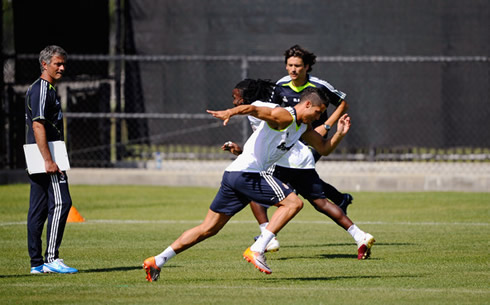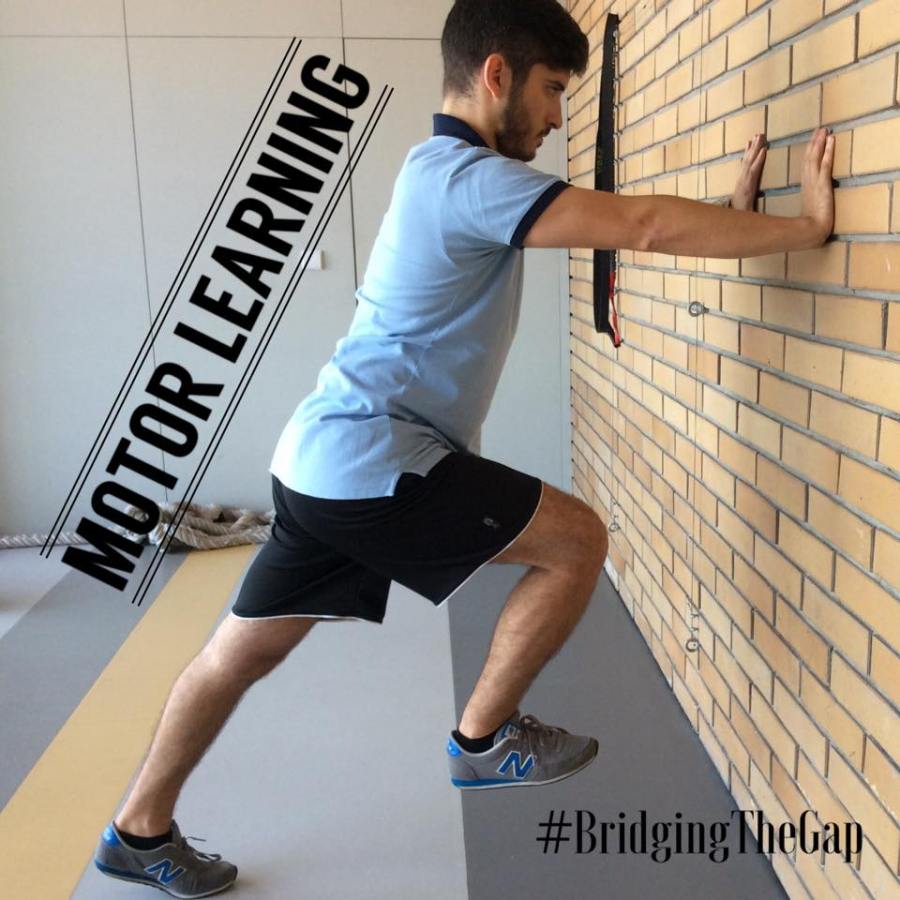
Every athlete wants to become faster, either if it is a sprinting, field/court or marathon type athlete.
Success lives within the first 3-4 steps of acceleration, mainly in field and court sports. The ability to decelerate and accelerate quickly in any direction is an absolute game changer. By improving this capacity, athletes’ performance will improve and injury risk will be reduced.
Especially in football (soccer), it assumes a huge role since one of the most frequent actions in goal situations is straight sprinting (Faude, O., Koch, T. & Meyer, T., 2012)
In order to be fast, the athlete must fulfill some requisites. Of course genetics are important, but it would be a big mistake to attribute ONLY to genetics the ability to be fast.
THE 3 P’s
We can start with the 3 P’s, a concept introduced by EXOS, focusing on acceleration: Position, Power, Pattern.
1. Position
Mobility and stability are the foundation to make someone more powerful, faster, stronger. The ability to achieve complete ROMs with control in all joints is crucial, not only in terms of leverage (eg. mechanical advantage for muscle contraction), but also in terms of proprioceptive feedback (the more motion exists within a joint or tissue, the more mechanoreceptors like muscle spindles, GTOs, Ruffini and Pacinian endings are accurate and send more information) and motor learning (in Dynamic Systems Theory language, if someone has a lot of degrees of freedom, the ability to learn will be greater – we can see this during the developmental stage of a human baby).
So, we can see that the ability to complete greater ROMs with control (ie, using active and purposeful movement) is very important for performance demonstration not only due to biomechanical reasons, but also due to neurophysiological aspects.
More related to acceleration mechanics, an athlete must be able to achieve complete big toe extension, ankle dorsiflexion, hip flexion/extension (eg, hip flexion limitation can be paired with hip rotation limitation, so that should be also clear), thoracic extension/rotation and shoulder mobility. Also, a good degree of postural control within the pillar (shoulders, trunk and hips) is very important for kinetic linking, in order to avoid “energy leaks”.

2. Power
Force is essential for movement to occur. If there is no force, there will be no movement. Newton’s 2nd law states that acceleration occurs when a force acts on an object. Also, the greater the mass of the object the greater the amount of force needed. This is the reason why lean body mass refinement is so important for speed and power expression. Reducing the % of fat through proper nutrition could be one of the most important components of a speed enhancement program.
In order to achieve around 40-45º angle in the 1st step of acceleration, the athlete needs to apply both vertical and horizontal force into the ground. The vertical force vector is mainly related with bodyweight – the athlete must overcome his own weight, in order to not fall forward. Apart from overcoming his own weight, the athlete needs also to express enough vertical velocity – similar to an airplane during take-off -, being around 0,8-1,0 m/s in elite sprinters.

So, for a football player like Cristiano Ronaldo, who weights around 80 kg, and who is one the fastest athletes in this industry, he needs to express around 972 N (99 kg) of vertical force during his first step of linear acceleration. So we can clearly understand the importance of strength in order to be fast.
However, despite the importance of vertical force during acceleration, the secret lives in horizontal force production. Vertical force is constant, and generally speaking, it only varies with bodyweight changes through time. So, in the case of the first steps of acceleration, horizontal force expression enhancement is the goal of any speed development training program.
In 2008, when Usain Bolt broke the 100 m World Record, in the end of his first step he achieved a speed of 4,0 m/s (Mann, 2011). Making some simple physics calculations, he expressed around 940 N (96 kg) of horizontal force just during his 1st step. Adding this to approximately 1109 N (113 kg) of vertical force – bodyweight of around 94 kg – he produced a total force of 2049 N (209 kg) just during his first step, taking less than half a second! This amount of force represents more than the double of his bodyweight.

An athlete not only needs to produce high levels of force, but needs also to produce it fast. Rate of Force Development is one of the most important characteristics for performance enhancement. Again in 2008 Olympic Games, Usain Bolt reached a maximum speed of 12 m/s. After his 3rd step, ie. after around 0,9 seconds, he already reached 7 m/s, more than 50% of his maximum speed (Mann, 2011). Once again, we can clearly understand the need to increase strength, rate of force development and power.

When an athlete is not able to achieve high levels of force production, he would not be able to execute the first step of linear acceleration with the efficient angle of 40-45º. Instead, the athlete starts to produce less horizontal force, becoming in an “overrotated” position with trunk flexion, resulting in an open knee (>90º angle) forward reaching (“pulling the ground” analogy, instead of “pushing the ground” analogy), exposing the hamstrings to greater injury risk. Here we can also realize that is not possible to separate performance enhancement from injury risk reduction.
Making it simple, maximize lean body mass, increase maximum strength levels, and peak power output in order to achieve superior levels of speed expression. Strength and power training should consist in lifting heavy, medium and light weights with high velocity of contraction (different from velocity of displacement).
3. Pattern
Since Position and Power have been cleared, we already know that the athlete can achieve position A and position B within acceleration mechanics (since he has enough mobility, stability and postural control), and he has also the minimum requirements of force production to achieve those positions. However, this is not enough for a superior expression of linear speed. Although he is able to achieve position A and B, is he able to go from A to B? Is the athlete able to apply those levels of force production in the correct direction? This is what Patterning, Motor Learning and Kinematics are all about.
Coaching skills are the real game changer in this case. Sometimes, just by correcting some Position problem, or Power deficit, would be enough to get a new automatic Pattern. As stated by Dynamic Systems theory, if there are no mechanical restrictions then the most effective movement pattern will naturally emerge to meet the demands of the task and environment.
However, in other cases the main problem is the acceleration patterning itself. This is when drills and cues that create a favourable coaching context come into the game. As Nick Winkelman says, “coaching is not what is said, but rather what is heard”. Education is crucial for creating a learning context.
Related to acceleration, the cues and drills should emphasize a “pushing the ground” mentality, instead of “pulling the ground”, since it reduces efficiency (biomechanically speaking it will promote greater negative horizontal force – ie. braking force) and increases hamstrings injury risk. Also, it should emphasize “power over quickness” with “piston-like” action instead of “cycling” action during the first steps of acceleration.
Especially in football, it is very common to see athletes making a big amount of small and quick steps during acceleration. Although this is very common, it does not mean that it is the most efficient strategy to express speed, due to energy expenditure and mechanical disadvantage.

PUTTING ALL TOGETHER
Despite all the characteristics emphasized during this text, I can’t stress enough that there are no rules when we are talking about human movement. There are athletes who have gross limitations and can still demonstrate phenomenal speed and performance.
However, performance is all about efficacy, efficiency and durability. Position, Pattern and Power are 3 of the most important aspects in order to achieve superior performance during all career-span.
The 3 P’s can be assumed as an evaluation process, as well as an intervention process. When any movement lacks efficiency, the evaluation process should follow the 3 P’s hierarchy: if an athlete has any problem in acceleration mechanics, it can be due to a Position, Pattern and Power problem, with the particularity that any of those different problems can result in the same outcome in terms of acceleration mechanics. This is why it is very important to have either an evaluation system, and an intervention system, in order to prioritize the most effective intervention.
Especially in field and court sports, as in football, speed is also dependent of the surrounding environment. Reaction time is crucial for superior performance, and in fact there are athletes who are very fast in the track (eg. 40 yard dash), but when they are on the pitch, during a match, they cannot demonstrate the same speed, because everything that happens on the pitch is chaotic. This is why there a distinction between agility (change of direction mechanics without the presence of external stimulous – closed skills) and multidirectional speed (change of direction mechanics with the presence of external stimulous), and both should be part of a training program, in order to achieve superior performance.
So, in order to improve acceleration, and consequently, speed performance, an athlete should:
- Refine body composition;
- Achieve complete ROMs with control (active movement within purposeful movement) in all joints;
- Increase force production ;
- Optimize the direction of that force
We should not look at this as the rule, but mainly as the basics for performance enhancement and injury risk reduction.
BIBLIOGRAPHY
1. Faude, O., Koch, T. & Meyer, T. (2012). Straight sprinting is the most frequent action in goal situations in professional football. J Sports Sci, S. in press
2. Mann, R. (2011). The mechanics of sprinting and hurdling. CreateSpace.

